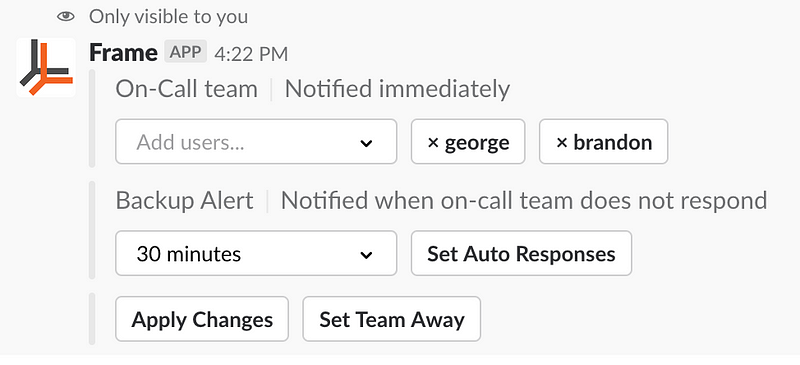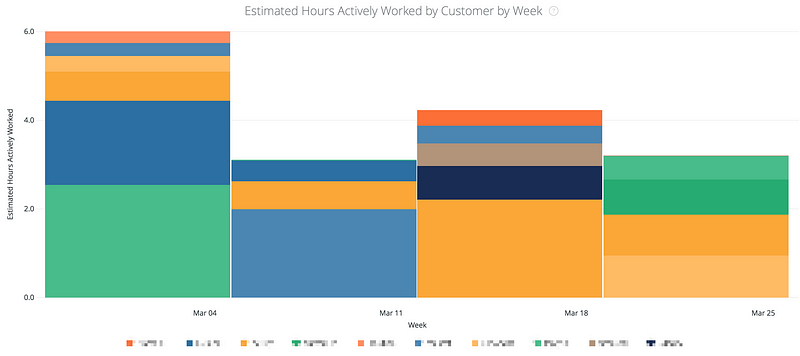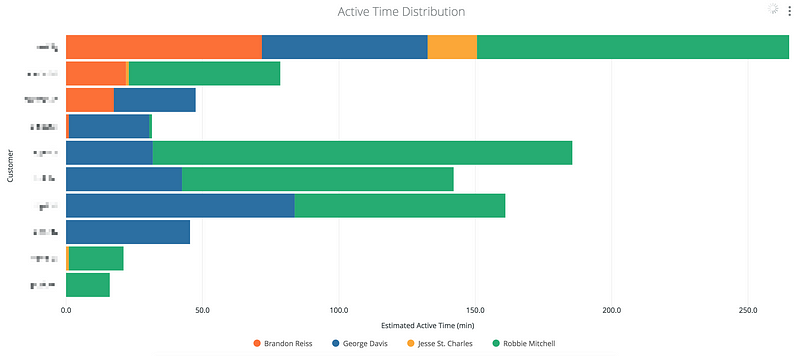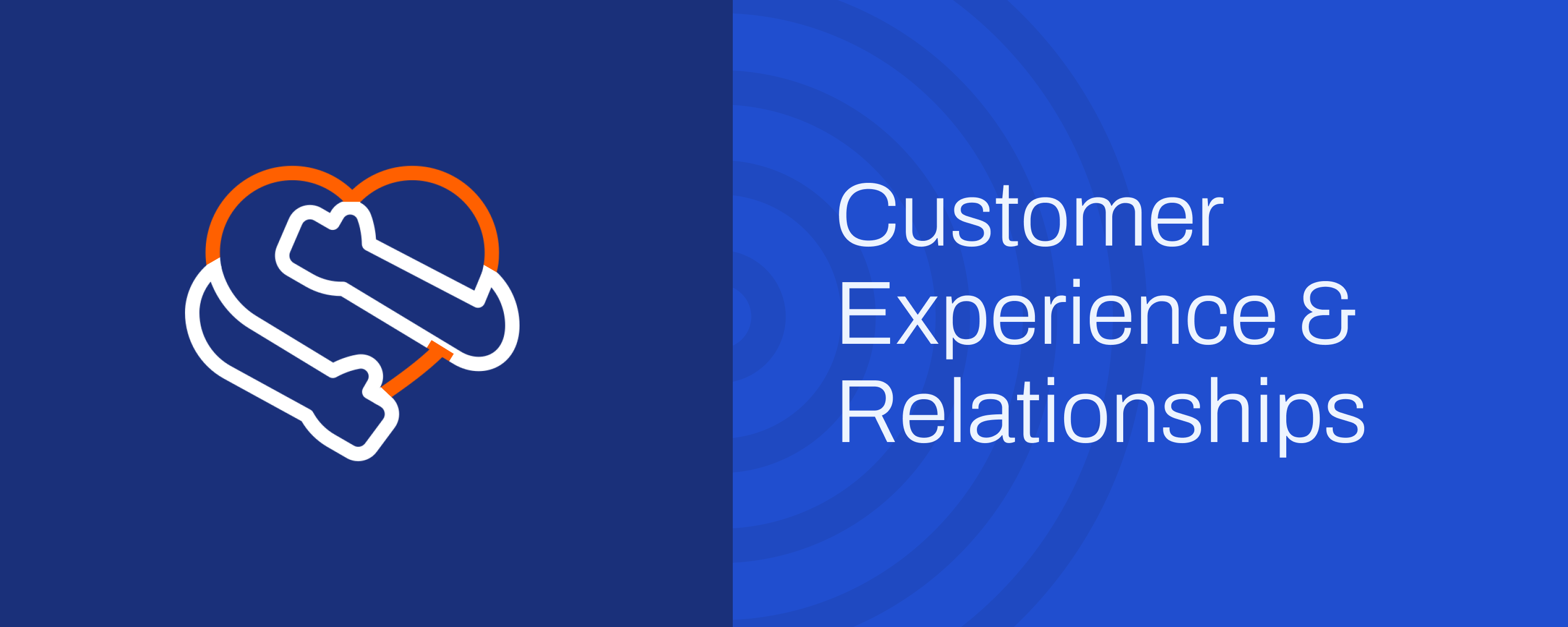We’re always talking about “meeting customers where they are.” With 9 million people and counting using Slack weekly, chances are, your customers are, too. In fact, it’s not just your customers — you probably use Slack or a similar team chat service, too. So if your customers are using Slack, and you’re using Slack, and you both prefer using it internally… why aren’t you meeting them there? By using a tool that customers use with their own internal teams, you help them feel like a part of _your_ team. Plus, while traditional chats end when the browser window is closed, Slack gives you an open channel with a permanent history, where customers can chime in anytime. And that’s typically why the notion of support on Slack causes teams to run for the hills, especially with Slack being a whole new frontier for support teams. The idea of always being available can cause concern for support teams.
- **How do you do Slack with customers well?**
- **How do you measure everything?**
- **Won’t customers expect you to be available at all hours?**
- Getting your team on board
- Support model vs. Account Management model
- 5 use cases for inviting customers to Slack
- Working in private channels vs. a separate community
- Expectations and style
- Beyond Slack analytics: total active time, wait times, and more
- Integrating Slack conversations with CRMs, email ticketing, web chat, task managers, and more.
### **Build the foundational processes** #### **Getting your team onboard** Some of your processes will be internal and invisible from the customer’s perspective — but make sure they’re not invisible to your team. Whatever processes you develop, codify them. Write them down. Put expectations on paper (or these days, on screen) and make them accessible. This way, there’s a clear and shared understanding of how things work. And don’t forget that just because you said it, doesn’t make it so. Keep repeating your message until you’re tired of hearing it. Only then will your team begin to internalize it. Long story short, it’s not enough to develop processes. Make sure they’re both tied into training, shared, and reinforced with everyone on your team.
#### **Staying on top of conversations** One of most important processes you’ll need is the means to monitor your Slack channel to make sure no customer conversation goes unnoticed. Depending on your team type, we recommend two different models:
- **Support model:** Assign at least one person to watch all of your customer channels during your operating hours. If you have a high volume of messages, you might need more than one person per channel. The bottom line is that there needs to be enough eyes on Slack to ensure timely responses across all channels.
- **Account management model:** Assign specific owner(s) for each channel. These owners are the go-to point of contact for their assigned customer accounts and work toward building close one-on-one relationships with them.
**How Frame helps:** Use escalation rules to designate who gets alerted when a new conversation is waiting — per channel, or teamwide. In addition, set backup alerts that alert other teammates if your first responders become unavailable. Frame lets you set up schedules multiple tiers of responders who receive alerts anytime a new conversation is started _and_ on-call alerts in case those channel owners miss something.


 An account owner alert; Defining the channel owner alert; Defining the on-call and backup teamalerts
An account owner alert; Defining the channel owner alert; Defining the on-call and backup teamalerts#### **Deciding whom to invite toSlack** It’s also important to decide which customers to invite to Slack. Most teams are focusing on one of the following groups:
- **All customers** _(permanent invite):_ Some teams are pulling out all the stops, inviting all their customers to Slack channels for ongoing conversation. Although many teams don’t have the bandwidth to invite their entire customer base, or it wouldn’t make sense given their particular business model, for others Slack serves as a very low friction method of communication and helps teams stay strongly connected to their valuable customer base. This is also a great option for large communities of customers who may be interested in connecting with one another.
- **All customers being onboarded** _(temporary invite):_ Onboarding is such a key time in the customer lifecycle, and some teams are adding Slack as a way to provide a high-touch experience and increase product adoption.
- **Enterprise / VIP customers** _(permanent invite):_ Enterprise or VIP customers often require more personalized and dedicated attention, and a Slack channel is a great way to facilitate a closer partnership.
- **Enterprise / VIP customers during integrations projects** _(temporary invite)_ — Integrations projects are a time when customers may need an elevated level of support and tight collaboration with your internal team. During this time, a Slack channel provides a great shared workspace and is an easy way to keep everyone updated on progress.
- **Premium Support customers** _(permanent invite)_ — Premium Support often means faster responses and access to different support channels. Providing Slack as an exclusive channel can help boost the appeal of a Premium Support offering and support a truly white glove experience.
#### **Choosing where to have your conversations** Once you’ve narrowed in on _whom_ you’re going to invite to Slack, you’ll need to figure out _what_ to invite them to. You’ll have several options, each one best fitted to different situations:
- **Your Company’s Workspace** : This is an ideal setup for high-value relationships. If your customer is already using Slack, try a shared channel. If not, use a guest channel. A shared channel is essentially a common space between your Slack workspace and your customer’s workspace, while a guest channel just gives your customer access to part of your Slack workspace.
- **Public Community Workspace** : This is a great option for managing a large freemium community. Create a separate Slack workspace that anyone can join. You can use a tool like Slackin to manage this. You can also create upgrade paths by creating private channels within the community for specific relationships.
#### **Strengthen team skills throughtraining** Talking to customers on Slack is different than email, or even on the phone. Because of the platform, conversations will naturally be more informal. Embrace the looser style of communication. Steer away from canned responses and keep it authentic. And because it’s more real-time than email, your team needs to be ready to think on their feet. This type of communication requires your team to be trained to strike the right tone, so they can improvise responses and add a personal touch without steering too far away from the brand voice or crossing the line between conversational and unprofessional. Make sure your team is also trained on any processes and tooling — don’t just turn on Slack support and toss them in. As with any change management initiative, you should be involving every layer of your team from the start so they can feel latitude over the process and get the valuable knowledge context they need to execute well. What’s more, frontline team members are rich sources of information on where customers might get confused. Bringing them in early means a better outcome for everyone. But training doesn’t stop with your team. Customers also need to be trained to know what to expect from you, particularly in terms of when you’ll be available and how quickly you can reply. If you can be available around the clock, great. For many teams, however, 24 hour service isn’t feasible. In that case, be honest with customers. Let them know your business hours upfront and emphasize that you’re approaching it as a relatively asynchronous communication channel. You can post your business hours in the channel description, and use an automated away message when you’re offline stating when you’ll return.
**How Frame helps:** Frame lets you turn on an away message for one channel, all channels, and anything in between. Use it sporadically, or set up a schedule based on the channel, time, and day.
#### **Data makes the world go‘round** Data is the grease the keeps the whole wheel turning. Tracking metrics helps make sure you’re headed in the right direction and can highlight places where you might need to make changes. They also give you the knowledge you need to plan ahead, make hiring decisions, and update service contracts. Using Slack alone, access to metrics is limited, but you can track the number of messages sent during the month. This will give you a general idea of historical activity, and you may be able to bootstrap some other metrics, like average time spent. No matter what, just make sure you’re using data to inform your strategy and decision making. If your objectives are to improve your customer experience and team productivity, use metrics that shed light in those areas and use what you learn to take action and make improvements.
**How Frame helps:** Frame turns conversations into sessions with clear start and end points, and additionally calculates each member’s active time contributions message by message.With Frame, you can get Slack analytics with a lot more information and accuracy by looking at things like:
- Messages per day (e.g., per channel, per person)
- Time spent actively talking (e.g., per channel, per person)
- Average customer wait time
- Longest wait times
- Most active customers
- Most active agents
- Active time trends (e.g., by week, by day of week)
- Percentage of time talking during business hours vs. other times


 Active Time: Per agent per week by customer; Average time per customer by day of week; Total time spent per agent in eachchannel
Active Time: Per agent per week by customer; Average time per customer by day of week; Total time spent per agent in eachchannel#### **Choose the right tool for thejob** While you can use Slack without any supplementary tooling, you’ll be disconnected from existing tools and processes built around your CRM and task management platforms.
**How Frame helps:** Frame gives you superpowers that keep things connected. You can push conversation summaries to customer databases like Salesforce, Zendesk, and Intercom to keep everything in one place, pull up customer information from Clearbit and CRMs to get customer information right from within Slack, send information back-and-forth between Frame and tools like Asana and Jira, and more.
#### **Bringing it alltogether** In the end, the idea of working with customers in Slack is no cause for panic. With a thoughtful approach and deliberate action, you can design the environment and structure that your team needs to meet your customers in Slack, build better relationships, and ultimately enable stronger retention and revenue growth for your business. _Thank you to Nykki Yeager for her incredible help with this post._


